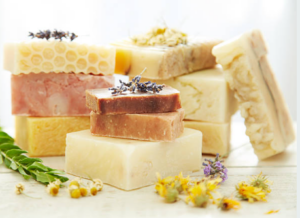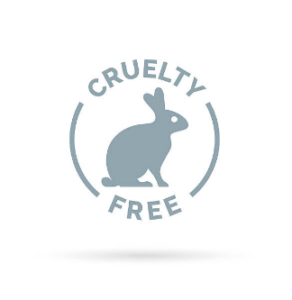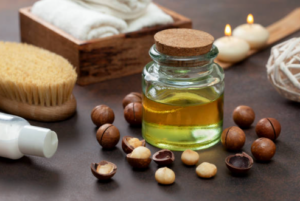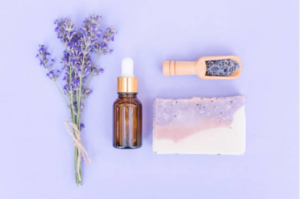Unveiling the Ethical Dilemma

The beauty industry is a realm of creativity, innovation, and self-expression, but beneath the shimmering surface lies a complex ethical issue: the use of animal-derived ingredients in beauty products. As consumers increasingly seek cruelty-free and ethical options, the role of these ingredients has come under scrutiny. In this thought-provoking blog, we delve deep into the ethical dilemma surrounding animal-derived ingredients, exploring the industry’s practices, the impact on animals, and the alternatives available for a more compassionate approach to beauty.
The use of animal-derived ingredients in beauty products has a long history, rooted in both tradition and functionality. These ingredients offer unique properties that enhance the texture, effectiveness, and sensory experience of various cosmetics and skincare items. However, as consumer awareness and ethical considerations have grown, the beauty industry is facing a critical examination of its practices and their impact on animals and the environment.
1. Beeswax: Derived from the wax secreted by bees, beeswax is a natural emollient often used in lip balms, moisturizers, and hair products. It creates a protective barrier on the skin while offering a smooth texture.
2. Honey: Honey, known for its moisturizing and antibacterial properties, has been utilized in skincare for its potential to nourish and hydrate the skin. It is a common ingredient in facial masks, cleansers, and creams.
3. Collagen: Collagen, a protein abundant in animal tissues, is used in skincare products to improve skin elasticity and reduce the appearance of fine lines and wrinkles. Its presence in anti-aging formulas aims to promote a youthful complexion.
4. Keratin: Derived from animal hair, feathers, or hooves, keratin is utilized in hair products to strengthen and condition the hair shaft. It is often found in shampoos, conditioners, and treatments for damaged hair.
5. Lanolin: Lanolin, extracted from sheep’s wool, is rich in moisturizing properties and is commonly used in lip balms, creams, and lotions. It acts as an emollient to soften and hydrate the skin.
6. Carmine: Carmine, a red pigment, is obtained from crushing cochineal insects. It has been used for centuries to provide vibrant red and pink hues in cosmetics, including lipsticks, blushes, and eyeshadows.
The Ethical Concerns
The use of animal-derived ingredients in beauty products has sparked ethical concerns that revolve around animal welfare, sustainability, and the broader implications for our relationship with nature. These concerns have ignited a global conversation about the moral responsibilities of the beauty industry and consumers alike.
1. Animal Welfare: One of the central ethical dilemmas pertains to the treatment of animals in the sourcing of these ingredients. Practices such as beekeeping for beeswax and honey, sheep shearing for lanolin, and the use of animals for collagen extraction raise questions about the well-being and humane treatment of these creatures. The confinement, exploitation, and potential harm endured by animals in these processes conflict with the principles of compassion and respect for all living beings.
2. Sustainability: The demand for animal-derived ingredients has led to ecological challenges. For instance, the commercial demand for products like collagen and keratin can contribute to the overexploitation of animal populations, disrupt ecosystems, and impact biodiversity. Overfishing for ingredients like fish-derived squalene further highlights the conflict between maintaining environmental balance and satisfying consumer demand.
3. Consumer Awareness and Demand: As consumer awareness of animal welfare and environmental sustainability grows, so does the demand for cruelty-free and ethical beauty products. Modern consumers are making more informed choices about the products they purchase, reflecting their values and beliefs. This shift in consumer behavior has prompted brands to consider alternative ingredient options and adopt transparent labeling practices.
4. Industry Accountability: The beauty industry, while known for its creative innovation, is also grappling with its role in perpetuating certain practices. As brands respond to changing consumer expectations, they are faced with the challenge of aligning their values with their product offerings. This has led to a reevaluation of ingredient sourcing, formulation processes, and overall ethical standards.
The ethical concerns surrounding animal-derived ingredients have prompted a wave of change in the beauty industry. Brands are now compelled to consider the broader impact of their choices, leading to a transformation in sourcing, formulation, and communication with consumers. As these discussions continue to gain traction, they reflect a larger societal shift towards conscious consumerism and a heightened awareness of the interconnectedness of our choices with the well-being of animals and the planet.
A significant milestone in the journey towards ethical beauty is the establishment of cruelty-free certifications. Organizations like Leaping Bunny, PETA’s Beauty Without Bunnies program, and the Choose Cruelty-Free certification offer consumers a reliable way to identify products that are not tested on animals. These certifications extend not only to the final products but also to the individual ingredients used in formulations.

Advancements in technology and research have paved the way for the development of innovative alternatives to animal-derived ingredients. Biotechnology, for example, has enabled the creation of synthetic versions of collagen, hyaluronic acid, and other compounds, minimizing the need for animal sourcing. Similarly, the rise of plant-based ingredients provides natural alternatives that offer similar benefits without compromising ethics.
The voice of the consumer has been instrumental in pushing the beauty industry towards ethical practices. Increasing consumer demand for cruelty-free and vegan products has not only encouraged brands to reformulate existing products but has also compelled them to launch entirely new lines that cater to the growing ethical beauty market.
Brands are recognizing the importance of transparency in their ingredient sourcing and manufacturing processes. Many have embraced educational initiatives to inform consumers about the ethical implications of animal-derived ingredients. This transparency empowers consumers to make informed choices aligned with their values.
Cruelty-free advocacy has prompted collaborations between brands, influencers, and organizations that promote ethical beauty. These partnerships raise awareness, foster education, and contribute to the overall momentum towards a more compassionate industry.
Governments and regulatory bodies in various regions have responded to ethical concerns by implementing regulations and bans on animal testing for cosmetics. The European Union, for instance, implemented a complete ban on animal testing for cosmetic products, signaling a significant step towards cruelty-free practices.
Leaders in the beauty industry have taken a stand by committing to cruelty-free and ethical practices. Many well-established brands are reformulating products, discontinuing the use of animal-derived ingredients, and adopting alternative ingredient sourcing methods.
Brands are embracing the challenge of reformulating products with innovative, ethically sourced ingredients. This not only aligns with ethical considerations but also fosters a spirit of innovation, allowing brands to explore new formulations and create products that resonate with conscious consumers.
Embracing Plant-Based Alternatives
- Plant-Derived Ingredients: Many botanical extracts offer similar benefits to animal-derived ingredients. For instance, shea butter and coconut oil can replace lanolin in skincare products.
- Synthetic Ingredients: Advances in biotechnology have led to the creation of synthetic versions of animal-derived ingredients like collagen and hyaluronic acid.
- Natural Pigments: Plant-based pigments, minerals, and even fruit extracts can replace carmine, eliminating the need for insects in cosmetics.
The transition to ethical beauty involves sourcing ingredients that align with cruelty-free and sustainable principles. However, ensuring that plant-based or synthetic alternatives are ethically harvested and produced can be complex. Sourcing methods must be evaluated to prevent contributing to issues such as deforestation, habitat destruction, and unsustainable farming practices.

Replacing animal-derived ingredients can pose formulation challenges. Ingredients derived from animals have unique properties that contribute to product texture, stability, and efficacy. For example, finding a suitable plant-based alternative with similar properties to beeswax or lanolin may require extensive research and experimentation.
Animal-derived ingredients often contribute to a product’s preservation and shelf life. Replacing these ingredients with natural alternatives may necessitate the inclusion of additional preservatives, which can introduce other concerns related to safety and potential skin sensitivities.
Consumers have come to expect certain qualities from beauty products, including texture, performance, and scent. Meeting these expectations while transitioning to ethical alternatives can be challenging. Brands need to strike a balance between creating effective products and maintaining their ethical commitments.
Accurate product labeling is crucial to inform consumers about the ingredients used. However, accurately conveying ingredient sourcing, formulation methods, and ethical considerations can be intricate. Brands must ensure that their labels are informative and transparent, guiding consumers towards making ethical choices.
Educating consumers about the complexities of ingredient sourcing and the transition to ethical beauty requires effort. Brands need to communicate their commitment to ethical practices while also addressing potential misconceptions or concerns.
The beauty industry is highly competitive, and brands that transition to ethical practices may face challenges in distinguishing themselves from competitors. Brands need to emphasize their commitment to ethical beauty in a way that resonates with consumers and sets them apart in the market.
Innovation remains at the core of the beauty industry. As brands strive to develop cutting-edge products, they must also ensure that these innovations align with their ethical commitments. Balancing creativity with ethical considerations requires careful planning and a holistic approach to product development.
Ethical sourcing and formulation can impact production costs, which in turn may affect product pricing. Brands must find ways to balance ethical practices while ensuring that their products remain accessible to a diverse range of consumers.

Industry Leaders and Change
- Pioneering Brands: Ethical beauty brands are leading the way by offering a range of cruelty-free and vegan options, encouraging larger companies to follow suit.
- Regulations and Bans: Some regions, like the European Union, have implemented bans on animal testing for cosmetics, pushing the industry towards more ethical practices.
- Informed Buying Decisions: As consumers become more conscious of ethical concerns, they can make informed choices that align with their values.
- Supporting Change: By supporting cruelty-free and ethical brands, consumers can contribute to the demand for positive change in the industry.
The ethical dilemma surrounding animal-derived ingredients is complex, touching upon various aspects of ethics, sustainability, and consumer preferences. As the beauty industry navigates this terrain, the conversation is shifting towards compassionate choices, transparency, and innovative alternatives. With growing awareness and a shared commitment to ethical beauty, the industry has the potential to transform and redefine the concept of beauty itself—embracing products that not only enhance our appearance but also reflect our values and respect for all living beings.

